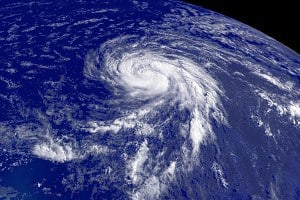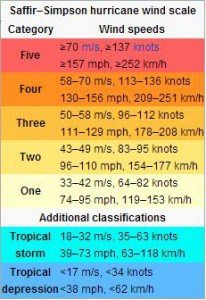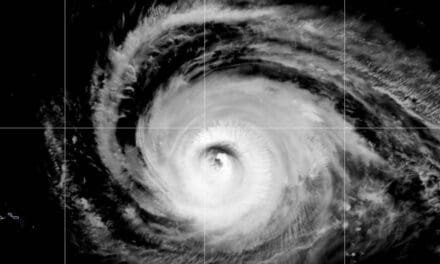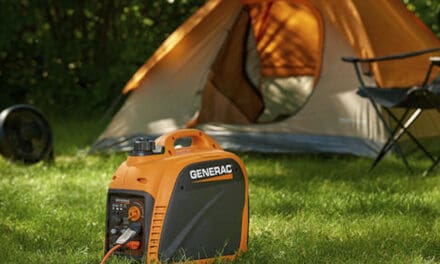Risk assessment for tropical cyclones during the 2014 Atlantic Hurricane Season for the North Atlantic Ocean and Caribbean Sea has been updated as of April 7, 2014. Major factors in the assessment include the trade wind forecast and the ocean temperature forecast.
Ocean temperature aids tropical cyclone formation by contributing energy to storms in the form of heat and moisture while trade winds help spin storms into cyclones. This year, a moderate El Nino in mid summer along with cooler than normal late-summer North Atlantic Ocean temperatures are expected to somewhat moderate the hurricane season that begins June first and lasts until November 30.
For comparison, annual risks are based on a 64-year average. For 2014, there is a 21 percent chance the season will be more active than usual, a 32 percent chance of average activity, and a 47 percent chance the season will be somewhat less active.
Researchers and forecasters are quick to point out that long-range forecasting is not an exact science, and that forecasts made weeks and months in advance are not always accurate predictors, and the Tropical Storm Risk assessment will be updated on May 27th.
2014 Storms
In the 2014 hurricane season, forecasters are expecting the formation of 12 tropical cyclones which includes seven (±3) tropical storms, three (±2) hurricanes, and two (±2) intense hurricanes. Some of those storms will almost certainly make landfall in the United States, the Caribbean Islands, Mexico, and the Lessor Antilles Islands.
The United States should expect one to three hurricanes and three to five tropical storms to make landfall this hurricane season. The ten year average is for three tropical storms and two hurricanes.
Prepare Now

Photographer Jim Occi captured these photos of gas lines in Cranford on Thursday following Hurricane Sandy.
By the time a tropical storm or hurricane is predicted to make landfall, the time for advance preparation has already passed. Stores will quickly run out of supplies and when evacuations are announced, the roads will be jammed with traffic.
If you live on the coast or in a low-lying area near the coast, be prepared by knowing your evacuation routes and determining where you will go in advance. When the time comes to leave, don’t hesitate. Grab your ready bag and your luggage and leave at once. Hotels and motels in destination areas will sell out quickly.
Those living away from the coast should be prepared with non-perishable food and water, and other supplies. Each person needs a minimum of one gallon of drinking water per day, and another gallon for personal hygiene.
Electricity
Tropical storms and hurricanes can destroy the local electrical distribution grid, and it can take weeks for crews to restore all utility customers. Homes equipped with a standby generator can keep the power on during extended outages. Portable generator owners are also equipped for long-term outages, but may have trouble finding fuel as gas stations run out of gas or are unable to sell the fuel because they don’t have electricity either.
It takes a fair amount of time and planning to install a standby generator. You won’t visit the local home center, buy one and have it running the next day. The project requires building permits, inspections, and the skills a qualified electrician and possibly a plumber.
Are you ready for hurricane season. It’s just six weeks away. Plan now and be prepared.




















